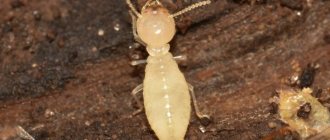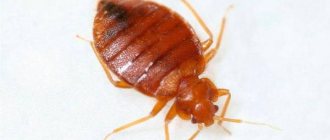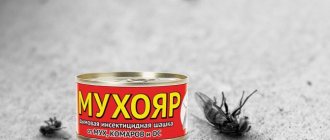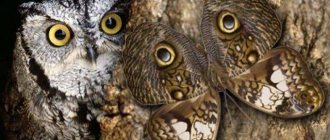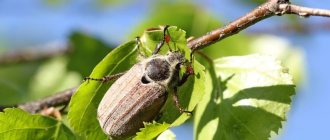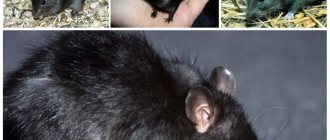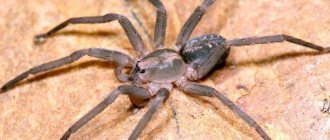Ants can rightfully be considered the most popular representatives of the animal world. They live in almost all geographical latitudes and there is hardly a person in the world who has not seen a living ant in his life, this insect is amazing in behavior, but at the same time typical in its appearance.
According to researchers, the ant population of the earth is the largest among arthropods.
Metamorphoses of evolution and adaptation to various environmental conditions largely determined the behavioral diversity and, in modern language, the superpowers of various species of ants.
Resistance of ants to frost and heat
The survival temperature of ants ranges from +50 to -50 degrees Celsius.
Species of ants living in the Sahara, where the sand heats up to 70 degrees, in addition to a metabolism specially adapted to the heat, are saved by the fact that their backs are covered with silvery hairs, which, by reflecting the rays of the sun, cool the body of the insects.The cold resistance of ants is ensured by special biochemical processes that result in the production of alcohol compounds that act as antifreeze.
Forest redheads
These are the most common ants in Russia. Representatives of this species have the unique ability to build huge houses, the height of which can reach up to 2 meters. Up to a million insects can live in such an anthill.
The habitat of red forest ants is coniferous, deciduous and mixed forests, the age of which exceeds 40 years. The body of females and workers varies from 7 to 14 mm in length and is usually red-brown in color. Males can be distinguished by their black body color and reddish-yellow legs. A photo of red forest ants is presented below.
Forest red ants
Sexual activity of forest inhabitants begins in May. Depending on the needs of the family, either working individuals or only males or females emerge from the laid eggs.
On a note!
Red forest ants are protectors of the forest: they destroy various insects that cause damage to green spaces, especially during the period of mass reproduction of pests. So, in one day, the inhabitants of one large anthill can collect more than 20,000 pest pupae.
Pharaoh ants are the most annoying guests
The pharaoh ant (also called the sugar ant) is the most common type of apartment (or house) ant.
The main difference between domestic ants is the tolerance of queen ants to each other, which is not typical for their wild relatives. Thanks to this property, rapid colonization of human housing by ants is ensured.The indestructible squads of these small 1-2 mm red insects, which have flooded the whole world as a result of the development of shipping from India, are capable of infuriating even the most nature-loving owners.
Depending on the conditions, the females live next to each other or hide in different secluded crevices, forming a single community, fed by foraging ants running around in plain sight.
Even the fact that where ants live there are no bed bugs or cockroaches is no consolation, because they themselves are also carriers of harmful microbes.
Description and features
An ant is a representative of the class of insects, the type of arthropods and the family of ants. These insects live in huge colonies with a clearly defined hierarchy, including division into three groups:
- Uterus
- Males
- Worker ants
Their body consists of a head, torso, three pairs of limbs and antennae, sensitive to external environmental factors, aromas and air currents; in fact, they perform the function of tactile organs. The feet have hooks for easy grip on the surface.
Body size varies from 0.4 to 1.3 cm depending on the species. The queen is usually the largest individual, but may be equal to other members of the community. The color also depends on the variety: red, black, green, etc.
But the presence of wings on the uterus, which die off after the end of the mating period, is found in almost all varieties; some have wings, regardless of gender and place in the community.
The insect has five eyes: two central ones with numerous lenses transmit a blurred image, but allow movement to be recorded; three additional ones have a primitive structure and are located on the top of the head.
The main reference point for ants is smell: with its help they identify members of their community and find food. Special smells are intended to warn of danger and call for help.
To protect against enemies, insects have a sharp sting on their abdomen, with which they can cause serious harm; at the same time, special glands secrete a toxic substance containing a high concentration of acid.
For a person who does not suffer from allergies, it is not dangerous in small quantities; usually the bite site simply turns red and itches. For insects and small animals, the poison poses a mortal threat and can cause severe intoxication.
Red forest ants are multifunctional forest defenders
These brown and larger relatives of house ants, which protect forests from pests, loosen the soil, carry tree seeds and build cone-shaped nests up to two meters high, are listed in the Red Book of Endangered Species.
Ants also contribute to the survival of the forest bird population; various beetles and aphids gather and reproduce in anthills, and the ants themselves also become protein food for all types of forest birds.They destroy caterpillars, pupae and adults of pine sawfly, leaf rollers and other insects that eat the bark, roots and leaves of trees in incredible quantities.
In addition, this type of ant is a source of the drug formic acid, which increases the risk of destruction of this population.
Kinds
The classification of ants is complicated by the similarity of some species to each other, the appearance of hybrids and twin varieties. With the course of evolution, some genera die out and the survivors resettle, which are forced to adapt to climate change and their usual habitat. The most numerous types of ants :
1. Red ants . The name was given because of the reddish color of the abdomen of females, while males have a black body with a brownish tint to the legs. Ordinary individuals of this species are small - up to 5 mm, the uterus can reach 7 mm.
Red ants are widespread in European countries, the Far East, Siberia and the Urals; they prefer coniferous and mixed forests, in which they play the role of protectors, exterminating pests.
Typically, representatives of the type settle under large stones or fallen trees, but are capable of building an anthill up to 2 meters high with a complex system of passages and numerous exits.
2. Small forest ants . A species of red-brown insects with a black abdomen is listed in the Red Book of many European countries, where it is endangered. Small forest ants are widespread mainly in coniferous forests of Russia, Sweden, Germany, etc. Despite the name of the genus, its representatives reach 14 mm in size and are able to build a dwelling from fallen pine needles about 2.5 meters high.
3. Garden ants . Perhaps the most numerous species, spread throughout Russia, Portugal and Great Britain. The color of the body, covered with microscopic hairs, can be either black or dark brown, but the size varies depending on the social role: queens reach 10 mm, males - 6, working individuals are the smallest - up to 5 mm.
Favorite places to build a house are old stumps and fallen trees. This species feeds on the waste products of aphids, so where these pests exist, you can find many small anthills up to 30 cm high. The peculiarity of black garden ants is the lifespan of the queen: she is capable of reproducing for almost three decades.
4. Pharaoh ants . The variety, named after its place of origin - in Egypt, has spread throughout the world. Individuals are among the smallest in the class and vary in color depending on their role in the community: brownish-yellow females reach 4.5 mm, black males - up to 3.5 mm, and ordinary workers - 2 mm.
It is noteworthy that the males of this species have wings, but in females they grow only during the mating period, after which they are bitten off by worker ants. Pharaoh ants live in human homes and are able to build an anthill almost anywhere - from the foundation of a house to household appliances.
5. Carpenter ants . Settled in forest-steppe zones of Russia and Western Europe. To build a home, they prefer the bark of trees, in which they make many passages, thereby causing damage to forest plantations; they can settle in rotten stumps or wooden buildings. The variety is represented by red ants with a brownish tint to the body, reaching 10 mm in length.
6. Giant ants . The habitat of insects with a bright black body, reaching 33 mm in size, is the humid forests of South America. The variety, in addition to its impressive dimensions, is interesting due to the absence of queens, whose role is taken on by female worker ants during the mating period. Males are larger than females and have permanent wings. Giant insects are underground inhabitants; their anthills are located at a depth of 40 cm and are intended for a small family of 30-40 individuals.
Other common varieties are:
— Ants are bulldogs, named because of their large jaw relative to the body, which allows them to capture prey.
— Ants are nomads who do not have a permanent habitat and create temporary homes and their own bodies.
— Pale-footed ants, so named because of their contrasting color: their body is black and their legs are light brown, the eyes of these insects are unusually large.
— Crazy ants, characterized by chaotic behavior, but capable of creating communities uniting several colonies with a high level of organization and several queens that do not quarrel with each other.
— Honey ants are common in places with arid climates; they store dew and plant juices in their abdomens, which feed all members of the community. Mexicans squeeze honey from these insects, which is considered a delicacy.
- Bullet ants. They are able to deal even with small vertebrates, which they eat as food, cutting them with sharp jaws. They protect themselves by releasing a paralyzing neurotoxin, which causes anaphylactic shock in humans, often resulting in death.
— Soldier ants. The peculiarity of the species is the clear organization of nomadic life activity, division into battalion groups. Due to the fact that the queen reaches 5 centimeters in size when laying eggs, the variety is recognized as the largest known.
- Fire ants. They are dangerous to all living things and are capable of destroying most of the living beings in the territory of their settlement. Despite their size of 4-6 mm, they are extremely aggressive and attack, releasing poison into the victim’s body.
There is an opinion that ants with wings constitute a separate species, but scientists believe otherwise: representatives of many genera, both female and male, have temporary or permanent wings. They serve for convenient movement to the habitat of other families and the formation of new colonies.
Interesting Facts
Ants are one of the most “humanized” representatives of the fauna, and there are good reasons for this: tens of thousands of species of this insect amaze with the variety of behavioral models developed in the process of survival.
It is the behavioral characteristics of various species that have given rise to analogies and corresponding names that are very reminiscent of people’s nicknames.
Thus, Amazon ants steal the larvae of other species, turning the newly hatched young into their slaves.
There is also a type of parasitic ant, non-working very small insects that find shelter and food with their relatives.
There are also many other figurative names that suit not only the appearance of the species, but also reveal its “character”: bullet ants, soldier ants, harvester ants, pygmy ants, thief ants, etc.
How do ants live?
All ants live in families. The number of families is very different: there may be several dozen individuals, or there may be several million.
Individuals of the same species are divided into castes:
- females are queens or queens that lay eggs;
- ants with wings are males;
- sterile working females.
This or that caste membership is genetic and does not depend on how the ants live and in what region. Queens are the largest in size and have wings, but after the mating season they chew them off for themselves. Males are smaller than worker ants, which do not have wings.
Almost all species lead a sedentary lifestyle, creating nests - anthills. Most often, the main part of the anthill is in the ground. This is a complex architectural structure, the branched system of passages of which can go deep up to 4 meters. The queen lives at the very bottom and there are eggs and larvae. The outer part of the anthill is a huge pile of twigs. There are also anthills that are not quite familiar to our eyes. For example, spiral ants build real labyrinths out of clay around the entrance.
The carpenter ant also builds an amazing nest. Their anthill is located in the trunk of old trees. They literally chew out passages in the wood. In this species, the largest uterus is found, reaching 2 cm in length. The houses of green ants or, as they are also called, weaver ants, are considered the most skillful architects. Green ants build their nests on trees from leaves, but do not tear the leaves from the branches. They glue the leaves together with their larvae, which secrete sticky threads. There are also species that do not have nests. They wander all the time. Nomadic ants do not move only when they reproduce, creating a huge openwork ball from their bodies for these purposes.
The queen of the nomadic ant is the most prolific of all insects, she lays three eggs in two seconds, producing 130 thousand eggs per day!
Ant food
Ants feed on live insects and their corpses, mushrooms and seeds. In addition to protein foods, the diet of ants should include carbohydrates. Sources of carbohydrates include plant sap, nectar, sweet secretions of aphids, and other insects. An amazing combination - aphids and ants, a vivid example of symbiosis. Ants protect aphids from enemies, carry aphids on their bodies to new shoots, and sometimes even take them to their anthill for the winter. The aphids, in turn, provide the ants with food.
Ant Reproduction
At a strictly defined time, ants begin to reproduce, mainly by budding. This happens once or twice a year. A young queen is born, and some of the workers together with her create a new anthill.
Most often, reproduction occurs in a mating flight, in which individuals from different anthills are mixed. Females and males return to the ground and begin building a nest. The males quickly die, and the queen ant lays eggs and eats nothing for a long time, almost a year, until the workers grow up and begin to bring food.


